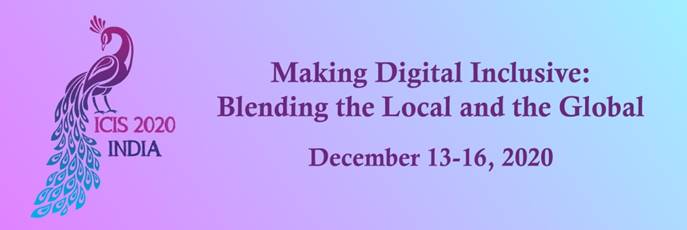Making Digital Inclusive: Blending Local and Global
Loading...
Paper Type
Complete
Paper Number
1564
Description
Voice has long been an important modality for digital inclusion – particularly through customised Interactive Voice Response (IVR) applications. In recent years, smartphone operating systems have integrated increasingly advanced voice capabilities. These include voice typing, voice search and voice assistance. As we move from small-scale customised solutions for specific contexts to large-scale general-purpose voice-based technologies, we need to renew our understanding of their potential for digital inclusion. To this end, we conducted an interpretive interview study of everyday usage of smartphone-based voice user interfaces among urban users in India with limited socio-economic resources. We combine theories of affordances with theories of digital inclusion - particularly the resources framework - to understand which affordances of VUIs are actualised and how users’ resources shape this process of actualisation. We aim to contribute to a better understanding of whether and how VUIs enable meaningful social participation leading to digital inclusion of its users.
Recommended Citation
Chaudhuri, Bidisha; Kendall, Linus; and Bhalla, Apoorva, "Beyond IVR: Exploring Voice User Interfaces for Digital Inclusion Among Urban Smartphone Users in India" (2020). ICIS 2020 Proceedings. 1.
https://aisel.aisnet.org/icis2020/blendlocalglobal/blendlocalglobal/1
Beyond IVR: Exploring Voice User Interfaces for Digital Inclusion Among Urban Smartphone Users in India
Voice has long been an important modality for digital inclusion – particularly through customised Interactive Voice Response (IVR) applications. In recent years, smartphone operating systems have integrated increasingly advanced voice capabilities. These include voice typing, voice search and voice assistance. As we move from small-scale customised solutions for specific contexts to large-scale general-purpose voice-based technologies, we need to renew our understanding of their potential for digital inclusion. To this end, we conducted an interpretive interview study of everyday usage of smartphone-based voice user interfaces among urban users in India with limited socio-economic resources. We combine theories of affordances with theories of digital inclusion - particularly the resources framework - to understand which affordances of VUIs are actualised and how users’ resources shape this process of actualisation. We aim to contribute to a better understanding of whether and how VUIs enable meaningful social participation leading to digital inclusion of its users.
When commenting on articles, please be friendly, welcoming, respectful and abide by the AIS eLibrary Discussion Thread Code of Conduct posted here.



Comments
1-Inclusion